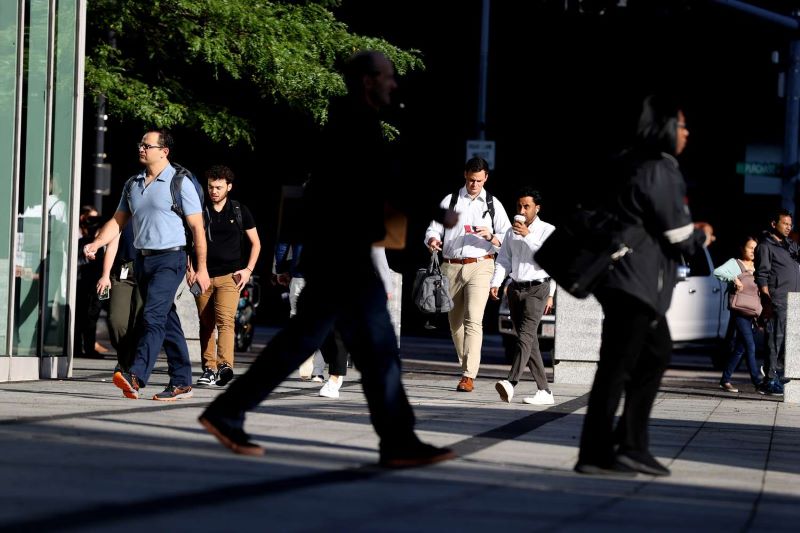Economy
Economists Divided on Federal Reserve’s Interest-Rate Cut Plans for 2024
Economists are divided over how many interest-rate cuts Federal Reserve officials will signal for 2024 at their policy meeting next week, following a recent uptick in inflation figures. Policymakers are likely to back away from a longstanding forecast for three rate reductions this year, but it’s a close call on whether they will still pencil in two or not.
Survey Insights: Split Expectations
A Bloomberg survey of 43 economists from May 31 to June 5 showed 41% expect two cuts on the “dot plot.” Another 41% foresee one or no cuts. The Federal Open Market Committee (FOMC) has held its benchmark rate at a two-decade high since last July. It was initially encouraged by a sharp decline in inflation in the second half of 2023. However, a lack of progress in early 2024 has delayed its plans for a gradual rate reduction.
Economists divided: 41% anticipate two rate cuts; another 41% predict one or none. Uncertainty prevails, WSJ Subscription Offers said.
Expert Opinions on Inflation and Rate Cuts
Ryan Sweet, chief US economist at Oxford Economics, commented, “The Fed is waiting for a string of data that strengthens its confidence that inflation is on a sustained path toward its 2% target. The balance of risks to our forecast for inflation is still weighted to the upside.”
Officials are all but certain to keep the rate steady in a 5.25% to 5.5% range for a seventh consecutive meeting next week. Chair Jerome Powell and his colleagues will update their economic and rate projections at the June 11-12 meeting for the first time since March.
Implications for Presidential Election
Fewer cuts would indicate a later start to reductions, which could have implications for the presidential election in November. Fed officials, however, maintain that their decisions are based solely on economic considerations. Fed watchers expect the first cut to happen at the central bank’s September policy meeting, the final gathering before voters head to the polls on Nov. 5.
Inflation and Growth Projections
Policymakers will likely raise their 2024 inflation estimates slightly and reiterate forecasts for US GDP growth at 2.1% annually. Surveyed economists overwhelmingly believe the Fed will cut rates in response to lower inflation. They don’t anticipate a shortfall in the labor market or an economic shock.

Tariffs Resuscitate U.S. Apparel Manufacturing
Joseph Ferrara, CEO of Ferrara Manufacturing, says tariffs on Chinese goods have helped revive his apparel manufacturing company…
Fed Leaders’ Recent Statements
A number of Fed leaders have suggested in recent weeks that they see no rush to cut rates, given the persistent inflation and solid growth outlook. Inflation by the Fed’s preferred measure was 2.7% in the year through April, and economists expect relatively little progress toward the central bank’s 2% goal in the second half of the year.
Before a self-imposed quiet period, several Fed officials hinted at potential rate cuts by year-end. Among them were Fed Governor Christopher Waller and Atlanta Fed President Raphael Bostic. Cleveland Fed chief Loretta Mester and Boston Fed’s Susan Collins emphasized the need for consistent downward inflation data.
Upcoming Economic Indicators
Next week’s meeting includes a government report on May’s consumer price index. The Fed prioritizes another price measure. Stephanie Roth, chief economist at Wolfe Research, stated, “The CPI print may influence the FOMC’s tone.” Roth anticipates a subdued print; a figure below 0.30% might confirm inflation deceleration.
Economic Outlook and Rate Cut Triggers
The Fed staff has been forecasting a soft landing for the economy since last July, and economists themselves have become increasingly optimistic about the growth outlook. Just 3% of respondents are forecasting a recession in the next 12 months, a significant drop from the 58% seen last July.
Fed leaders haven’t specified the exact metrics for rate cuts. 60% of surveyed economists say three positive core inflation reports are crucial. Elisabet Kopelman, a US economist, suggests a labor market slowdown could also trigger rate reductions. She works for Skandinaviska Enskilda Banken AB.
Mixed Labor Market Data
The government’s May jobs report, published Friday, showed mixed signals regarding the labor market. Growth in payrolls and wages accelerated, though the unemployment rate ticked higher and labor force participation fell. Traders interpreted the jobs data as likely to delay the timing of rate cuts, now anticipating about 1.5 quarter-point reductions this year, according to futures contracts.
Seize this opportunity for knowledge and empowerment. Enroll in our Digital News Combo Package today and join a community that relies on The Washington Post and The New York Times for daily enlightenment. Together, navigate and uncover profound insights beneath the headlines.

